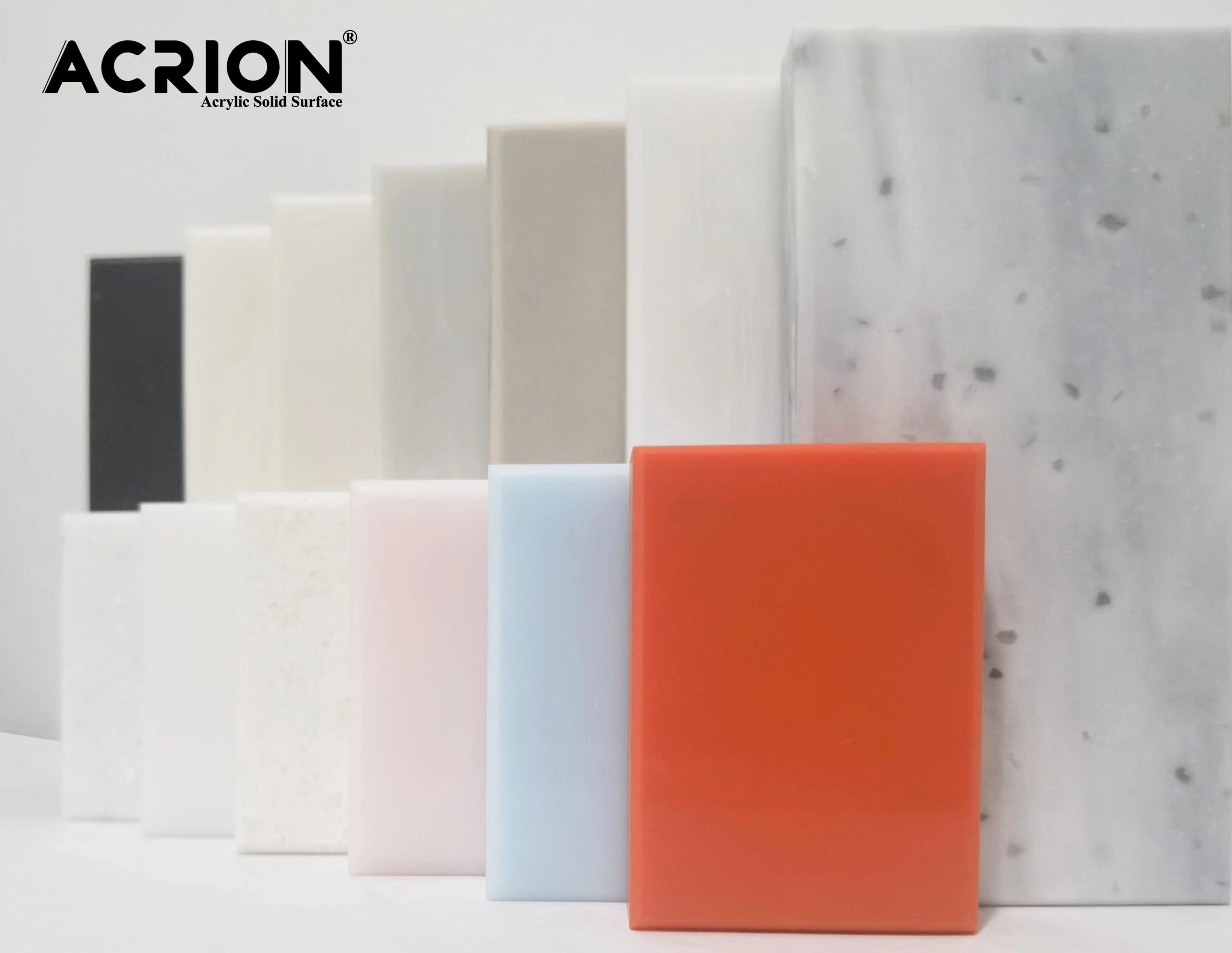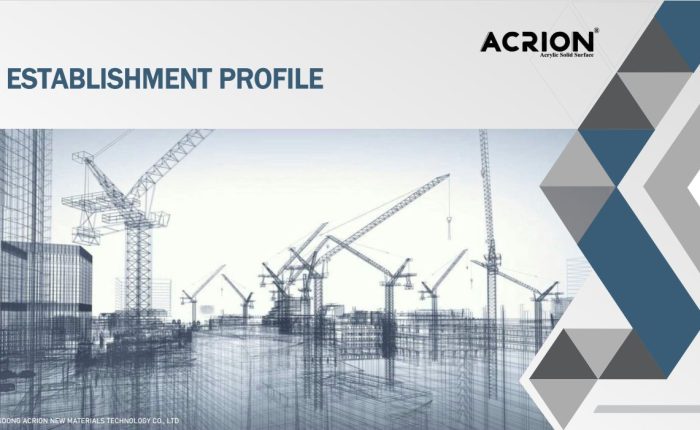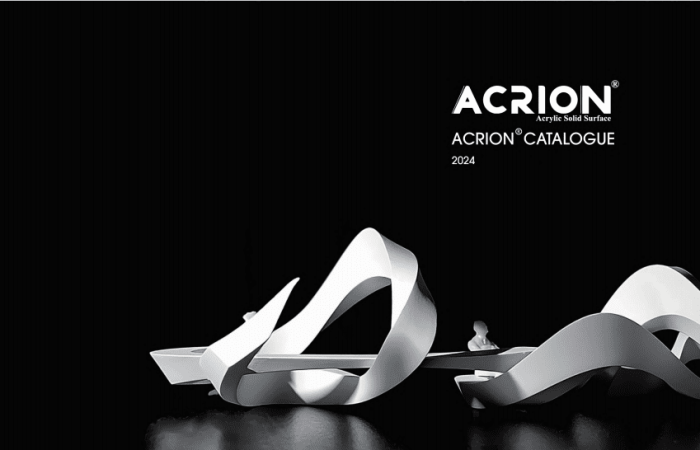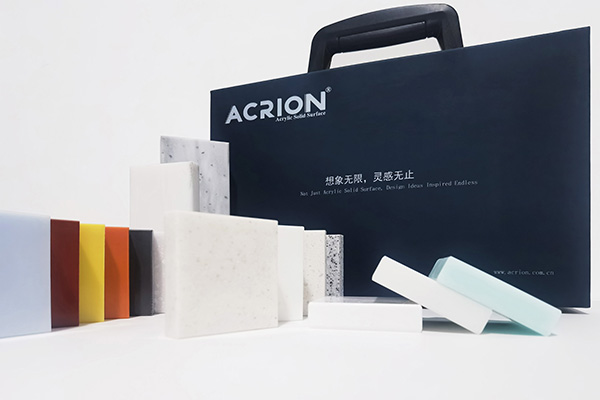ACRION vs. Sintered Stone Countertops: การเปรียบเทียบโดยละเอียดสำหรับการตัดสินใจอย่างมีข้อมูล
เมื่อเลือกเคาน์เตอร์สำหรับห้องครัวหรือห้องน้ำทำความเข้าใจกับความแตกต่างระหว่างเอเคอร์และหินเผา (ที่รู้จักกันทั่วไปว่า “แผ่นหิน” ในภาษาจีน) เป็นสิ่งสำคัญ วัสดุทั้งสองมีข้อได้เปรียบและความท้าทายที่ไม่เหมือนใครทำให้เหมาะสำหรับการใช้งานที่แตกต่างกันตามการตั้งค่าการออกแบบข้อกำหนดการทำงานและความคาดหวังในการบำรุงรักษา
องค์ประกอบของวัสดุและกระบวนการผลิต
ACRION: การผสมผสานของอะคริลิคและแร่ธาตุ
ACRION เป็นวัสดุพื้นผิวที่เป็นของแข็งที่คิดค้นโดย Dupont ในปี 1960 มันประกอบด้วยอะคริลิคพอลิเมอร์ (ประมาณ 40%) และแร่ธาตุธรรมชาติเช่นอลูมิเนียม trihydrate (ประมาณ 55%) โดยมีเม็ดสี (ประมาณ 5%) เพิ่มสี ส่วนผสมที่เป็นเนื้อเดียวกันนี้สร้างพื้นผิวที่ไม่มีรูพรุนและไร้รอยต่อซึ่งสามารถขึ้นรูปเป็นรูปร่างและการออกแบบต่างๆ กระบวนการผลิตช่วยให้สามารถปรับแต่งในแง่ของสีพื้นผิวและลวดลายทำให้ Acrion เป็นตัวเลือกที่หลากหลายสำหรับการตกแต่งภายในที่ทันสมัยและแบบดั้งเดิม
หินเผา: ออกแบบมาเพื่อความแข็งแกร่งและความสวยงาม
หินเผาเป็นวัสดุไฮเทคที่ทำจากแร่ธาตุธรรมชาติเช่นดินเหนียวเฟลด์สปาร์และซิลิกา วัตถุดิบเหล่านี้ได้รับความดันสูง (มากกว่า 15,000 ตัน) และอุณหภูมิสูง (1200–1500 ° C) ในกระบวนการที่เรียกว่าการเผาซึ่งเลียนแบบการก่อตัวของหินตามธรรมชาติมาหลายล้านปี ผลที่ได้คือวัสดุที่หนาแน่นและไม่มีรูพรุนที่มีความแข็งแรงเป็นพิเศษความทนทานและความต้านทานต่อความร้อนรอยขีดข่วนและคราบ หินเผานั้นมีให้เลือกหลายสีและลวดลายรวมถึงการออกแบบที่คล้ายกับหินธรรมชาติคอนกรีตหรือโลหะ
ความสวยงามและความยืดหยุ่นในการออกแบบ
ACRION: การรวมและการปรับแต่งที่ราบรื่น
พื้นผิวที่เป็นของแข็งของ Acrion ช่วยให้ตะเข็บที่มองไม่เห็นสร้างรูปลักษณ์ที่ดูเก๋ไก๋และเป็นเอกภาพ มันสามารถขึ้นรูปเป็นเส้นโค้งหรือรวมเข้ากับอ่างล้างมือสำหรับการออกแบบของเหลว ในขณะที่ Acrion มีสีและลวดลายที่หลากหลาย แต่การออกแบบโดยทั่วไปจะมีความละเอียดอ่อนและสม่ำเสมอกว่าเมื่อเทียบกับหินเผา ความสามารถของวัสดุในการเป็นเทอร์โมฟอร์มช่วยให้สามารถสร้างรูปร่างและขอบที่เป็นเอกลักษณ์ได้เพิ่มความสง่างามให้กับพื้นที่ใด ๆ
หินเผา: รูปลักษณ์ที่สมจริงและลวดลายที่เป็นตัวหนา
หินที่ถูกเผานั้นยอดเยี่ยมในการจำลองความงามตามธรรมชาติของหินด้วยตัวเลือกตั้งแต่การเดินหินที่มีลักษณะคล้ายหินอ่อนไปจนถึงลวดลายที่เป็นตัวหนาและร่วมสมัย แผ่นพื้นขนาดใหญ่ (สูงถึง 3200x1600 มม.) ลดความจำเป็นในการตะเข็บทำให้เหมาะสำหรับพื้นผิวที่กว้างขวางเช่นเกาะครัวหรือโต๊ะเครื่องแป้งห้องน้ำ ความสามารถของวัสดุที่จะผลิตในโปรไฟล์บางเฉียบ (บางเท่า 3 มม.) เปิดโอกาสใหม่สำหรับการออกแบบที่มีน้ำหนักเบาและทันสมัย
ความทนทานและความต้านทานต่อการสึกหรอประจำวัน
ACRION: ความทนทานปานกลางพร้อมความสามารถในการซ่อมแซม
ACRION มีความทนทานในระดับปานกลาง แต่มีความอ่อนไหวต่อรอยขีดข่วนและบาดแผลเมื่อเทียบกับหินเผา ในขณะที่มันสามารถทนต่อการใช้งานประจำวันวัตถุคมหรือผลกระทบหนักอาจทำให้เครื่องหมาย อย่างไรก็ตามความสามารถในการซ่อมแซมของ Acrion นั้นเป็นข้อได้เปรียบที่สำคัญ - รอยขีดข่วนของผู้พิพากษามักจะถูกขัดออกด้วยกระดาษทรายเพื่อกู้คืนเสร็จสิ้นเดิม วัสดุยังทนความร้อน แต่ไม่ป้องกันความร้อนดังนั้นจึงแนะนำให้ใช้สามด้านหรือแผ่นร้อนสำหรับหม้อร้อนและกระทะ
หินเผา: ความแข็งแรงที่ยอดเยี่ยมและการบำรุงรักษาต่ำ
หินเผาติดอยู่ในหมู่วัสดุเคาน์เตอร์ที่ทนทานที่สุดที่มีอยู่ ความหนาแน่นและความแข็งสูงของมัน (คะแนน MOHS ระดับ 6-7) ทำให้ทนต่อรอยขีดข่วนชิปและรอยแตก วัสดุยังทนความร้อนสูงสามารถทนต่อการสัมผัสโดยตรงกับอุณหภูมิสูงโดยไม่มีความเสียหาย นอกจากนี้หินเผานั้นไม่มีรูพรุนป้องกันการเจริญเติบโตของแบคทีเรียและไม่จำเป็นต้องปิดผนึก ข้อกำหนดการบำรุงรักษาต่ำทำให้เป็นตัวเลือกที่ยอดเยี่ยมสำหรับครัวเรือนที่ยุ่งหรือการตั้งค่าเชิงพาณิชย์
ข้อกำหนดการบำรุงรักษาระยะยาว
ACRION: การขัดปกติเพื่อความเงางามที่ยั่งยืน
ACRION ต้องการการบำรุงรักษาน้อยที่สุด แต่ได้รับประโยชน์จากการขัดเป็นระยะเพื่อรักษาความมันวาว หลีกเลี่ยงน้ำยาทำความสะอาดกัดกร่อนซึ่งอาจทำให้พื้นผิวหมองคล้ำเมื่อเวลาผ่านไป ให้ใช้ผงซักฟอกอ่อนและผ้านุ่มเพื่อทำความสะอาดทุกวัน สำหรับคราบที่ลึกกว่านั้นสามารถใช้การทำความสะอาดแบบไม่ใส่ใจได้ ธรรมชาติที่ไม่มีรูพรุนของ Acrion ทำให้ง่ายต่อการทำความสะอาด แต่แนะนำให้สนใจการรั่วไหลเพื่อป้องกันการย้อมสี
หินเผา: ดูแลอย่างง่ายดายด้วยการทำความสะอาดเป็นประจำ
พื้นผิวที่ไม่มีรูพรุนของหินเผาทำให้ทำความสะอาดได้ง่ายเป็นพิเศษ การเช็ดอย่างง่ายด้วยสบู่และน้ำมักจะเพียงพอที่จะกำจัดสิ่งสกปรกและสิ่งสกปรก หินเผาหินไม่จำเป็นต้องมีการปิดผนึกหรือการรักษาพิเศษซึ่งแตกต่างจากหินธรรมชาติลดค่าใช้จ่ายในการบำรุงรักษาระยะยาว ความต้านทานต่อคราบรอยขีดข่วนและความร้อนทำให้มั่นใจได้ว่ามันยังคงมองหาใหม่เป็นเวลาหลายปีด้วยความพยายามน้อยที่สุด
ผลกระทบต่อสิ่งแวดล้อมและความยั่งยืน
ACRION: รีไซเคิลได้และปล่อยต่ำ
ACRION ผลิตขึ้นด้วยความยั่งยืนในใจผสมผสานวัสดุรีไซเคิลที่เป็นไปได้ นอกจากนี้ยังได้รับการรับรองจาก Greenguard สำหรับการปล่อยสารเคมีต่ำซึ่งมีส่วนทำให้คุณภาพอากาศในร่มที่มีสุขภาพดีขึ้น ในตอนท้ายของชีวิต ACRION สามารถนำกลับมาใช้ใหม่เป็นผลิตภัณฑ์ใหม่ลดขยะได้ นอกจากนี้ความทนทานของมันยังช่วยให้มั่นใจได้ว่ามันยังคงทำงานได้นานหลายทศวรรษลดความจำเป็นในการเปลี่ยนบ่อยครั้ง
หินเผา: การผลิตที่เป็นมิตรกับสิ่งแวดล้อมและอายุยืน
กระบวนการผลิตของ Sintered Stone ได้รับการออกแบบมาเพื่อลดผลกระทบต่อสิ่งแวดล้อมโดยผู้ผลิตบางรายใช้วัสดุรีไซเคิลในสูตรของพวกเขา อายุการใช้งานที่ยืนยาวของวัสดุช่วยลดความจำเป็นในการทดแทนทรัพยากรที่อนุรักษ์เพิ่มเติม หินที่ถูกเผานั้นสามารถรีไซเคิลได้ 100% และธรรมชาติที่ไม่มีรูพรุนป้องกันการเจริญเติบโตของเชื้อราหรือแบคทีเรียซึ่งมีส่วนทำให้สภาพแวดล้อมการอยู่อาศัยที่มีสุขภาพดีขึ้น
ความเหมาะสมสำหรับการใช้งานที่แตกต่างกัน
ACRION: เหมาะสำหรับการออกแบบที่กำหนดเองและคุณสมบัติแบบบูรณาการ
ความยืดหยุ่นของ Acrion ทำให้เหมาะสำหรับการออกแบบที่กำหนดเองเช่นเคาน์เตอร์โค้งหรืออ่างล้างมือที่ไร้รอยต่อ นอกจากนี้ยังเป็นตัวเลือกยอดนิยมสำหรับโต๊ะเครื่องแป้งในห้องน้ำและการหุ้มผนังเนื่องจากความต้านทานความชื้นและความสะดวกในการทำความสะอาด ความสามารถของ Acrion ในการเป็นเทอร์โมฟอร์มช่วยให้แอพพลิเคชั่นสร้างสรรค์เช่นขอบโค้งมนหรือรูปร่างที่เป็นเอกลักษณ์ทำให้เป็นที่ชื่นชอบในหมู่นักออกแบบที่ต้องการผลักดันขอบเขต
หินเผา: อเนกประสงค์และมีประสิทธิภาพสูง
ความแข็งแรงและความต้านทานความร้อนของหินเผาทำให้เหมาะสำหรับการใช้งานทั้งในร่มและกลางแจ้งรวมถึงเคาน์เตอร์ครัวท็อปส์ซูท็อปและแม้แต่เตาผิง สีและลวดลายที่หลากหลายช่วยให้มั่นใจได้ว่ามันจะเติมเต็มสไตล์การออกแบบใด ๆ ตั้งแต่แบบดั้งเดิมไปจนถึงทันสมัย แผ่นพื้นขนาดใหญ่ของ Sintered Stone ยังเป็นตัวเลือกที่ยอดเยี่ยมสำหรับโครงการขนาดใหญ่เช่นอาคารพาณิชย์หรือพื้นที่สาธารณะที่ความทนทานและสุนทรียภาพมีความสำคัญเท่าเทียมกัน



